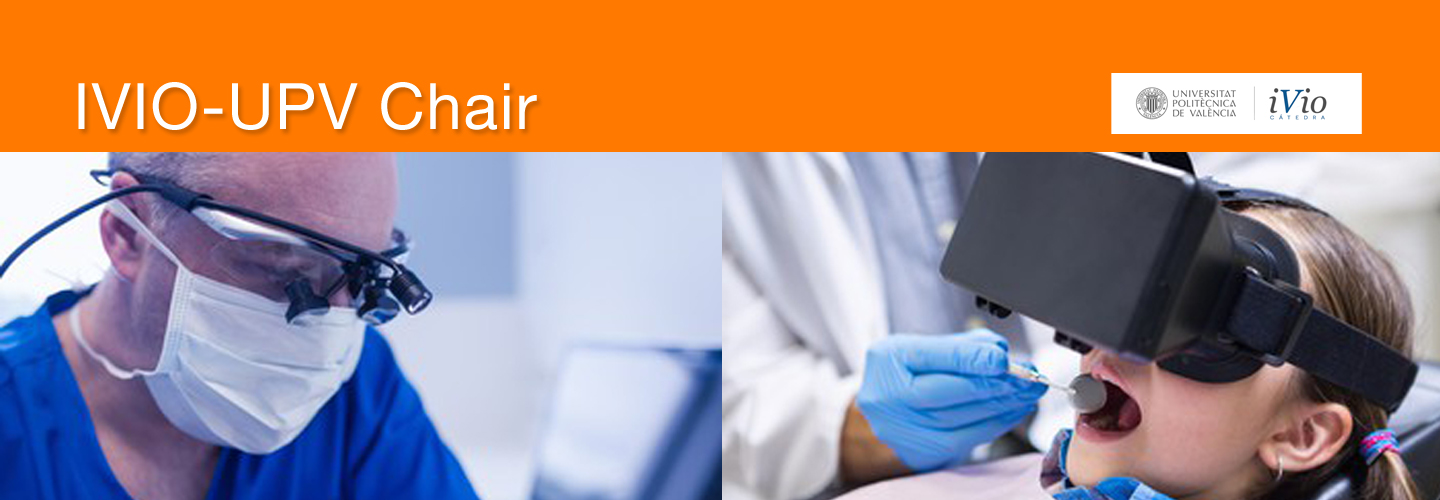Take a second to imagine the dental clinic of the future, a place where there were no limitations of time or space. Where we were able to develop a synchronous distributed Virtual Reality (VR) environment. An environment in which two or more dentists located in different geographical points, could interact and collaborate in a virtual oral scenario in 3D. In this case, one of the dentists could be an online professor or supervisor giving instructions and providing relevant information, while monitoring and controlling the quality of service and experience. This is just one example of what emerging technologies and multimedia communications can offer us.
- Augmented Reality (AR) applications to facilitate the training and operating processes
- Haptics-based interactive VR applications used for training, remote collaboration and long-distance exchange of experiences.
- Use of VR goggles for patients while they are in consultation and to treat certain phobias.
- Gesture recognition applications to prepare exercises to improve and monitor craniomandibular dysfunction.
- Inclusion of multisensory (eg. flavors) and environmental (eg. lighting) effects that produce a sense peace and calm for the patient, improving the quality of experience during their visit to the dentist.
- Video capture and processing systems, as well as conference calling, applicable to different fields of dentistry (eg. inspection, distance learning, tele-assistance…)
This and other research form part of the IVIO-UPV Chair’s ambitious research and innovation project, which will be carried out by several research teams from both the Campus Gandia of the UPV and the IVIO. The participation of students from both institutions is also expected, allowing them to join forces and share knowledge.
ADVANCED MULTIMEDIA TECHNOLOGIES TO IMPROVE THE PATIENT EXPERIENCE
Under the umbrella of this research Fernando Boronat, Full Professor in the Communications Department and head of the Immersive Interactive Media R & D group at the Campus Gandia of the UPV, has announced the creation of a new line that will signify “the introduction of the highest level of emerging advanced multimedia technologies to improve procedures related to the field of dentistry, both in practice and in training, as well as to improve the patient experience.” According Boronat, “concepts such as virtual reality, augmented reality, interactivity, immersivity or multisensoriality still appear to be oblivious to dentistry,” but, “our goal is to develop services, applications and innovative devices that allow them to be applied to everyday clinical practice,” concludes Professor.
PROJECTS STARTING FROM 2017
In recent years, dentistry has undergone radical changes in the treatment of oral diseases. According to Joan Faus, doctor and director of the IVIO, “the future of dentistry lies in the constant application of new technologies to improve patient care management. Therefeore, the advances that the Chair will implement in the Campus Gandia will allow “better diagnosis and treatments, improve the quality of life of many groups of patients, help early detection and prevention of diseases and promote the implementation of more efficient processes,” concludes Faus.
These projects are currently in the drafting stage and will be implemented in January 2017, when the theoretical and applied research is set to begin. Upon completion of the theoretical study, development and experimental analysis stages, to be conducted at the Campus Gandia of the UPV, the knowledge acquired and the developments achieved will be put into practice in the IVIO clinical facilities in Gandia.
More information and questions regarding the IVIO-UPV Chair can be addressed in writingto Francisco Camarena, a professor and researcher at the UPV Gandia Campus: fracafe@fis.upv.es.
You can follow the activity of the IVIO-UPV Chair on their: blog / Twitter / Facebook
